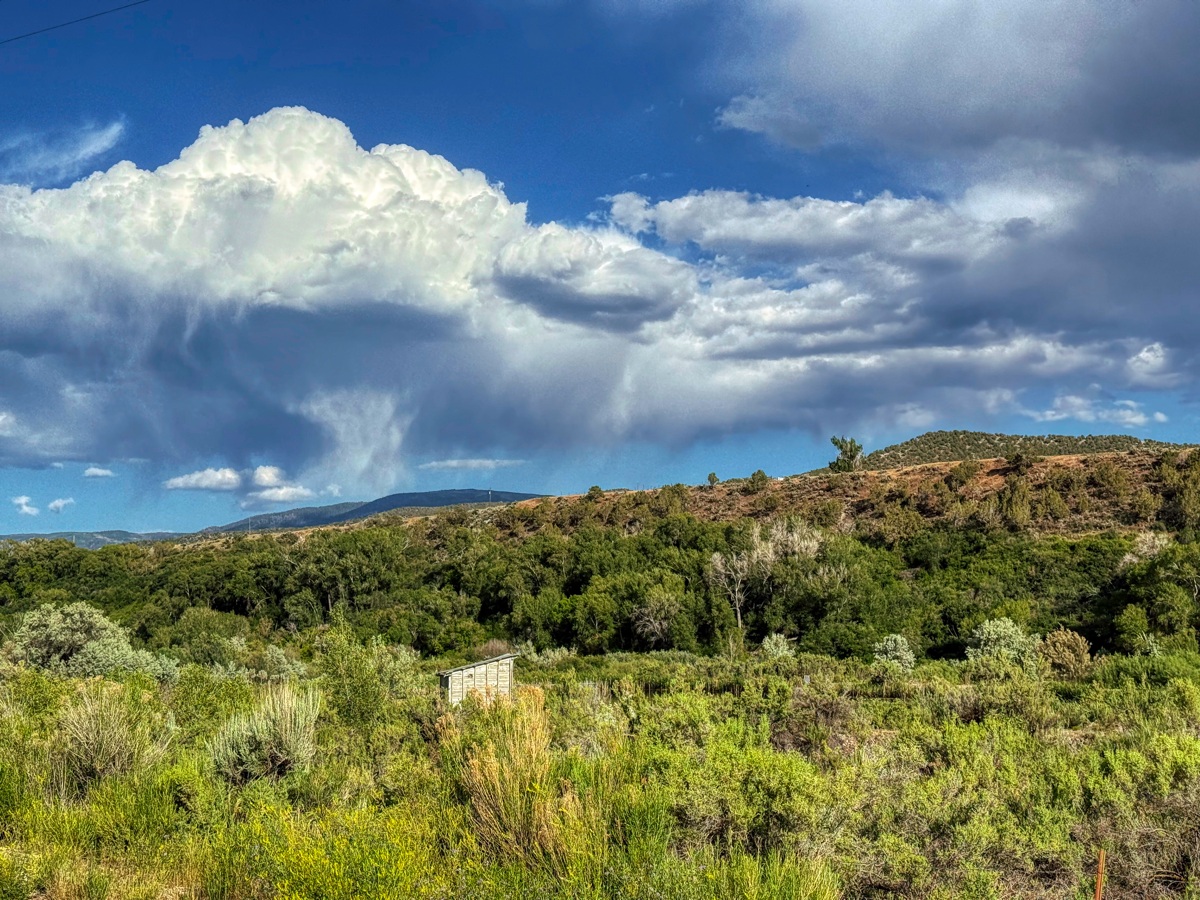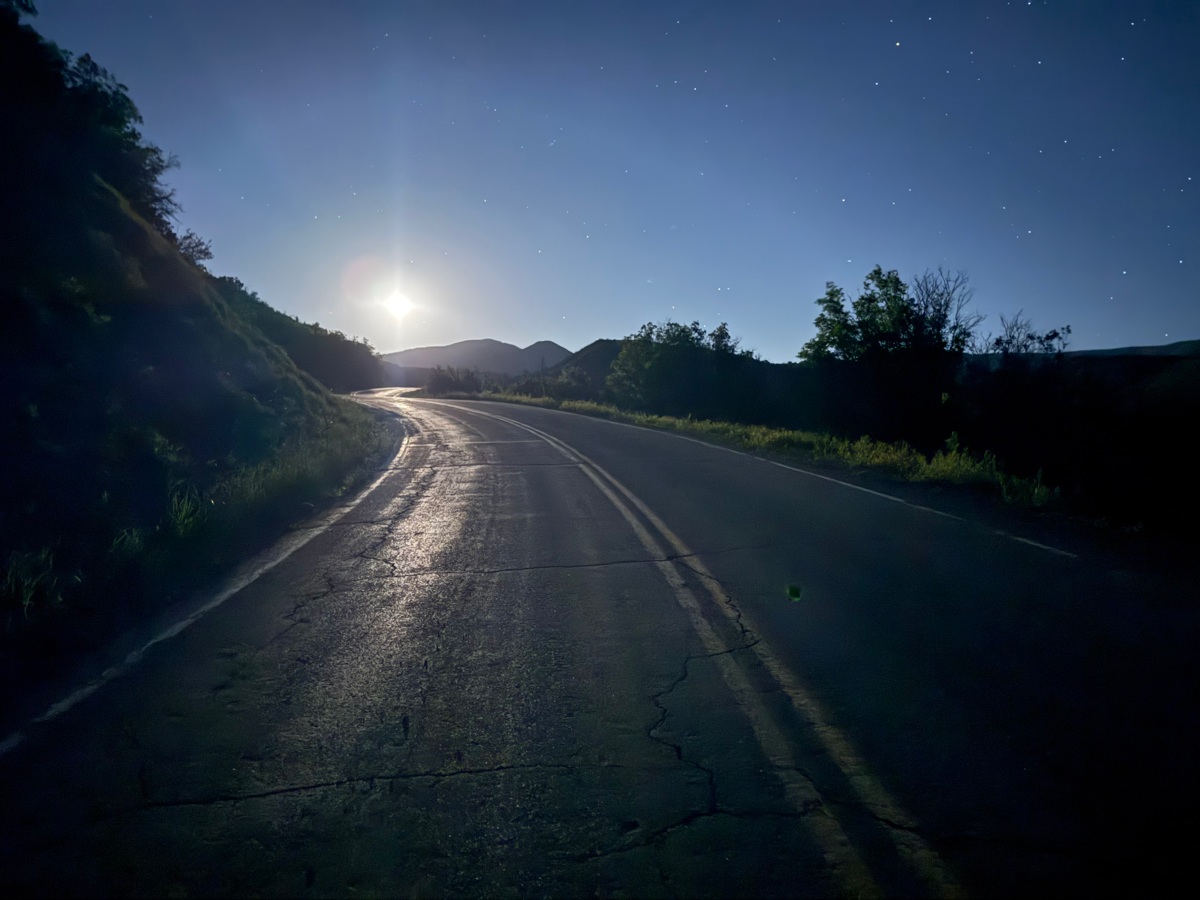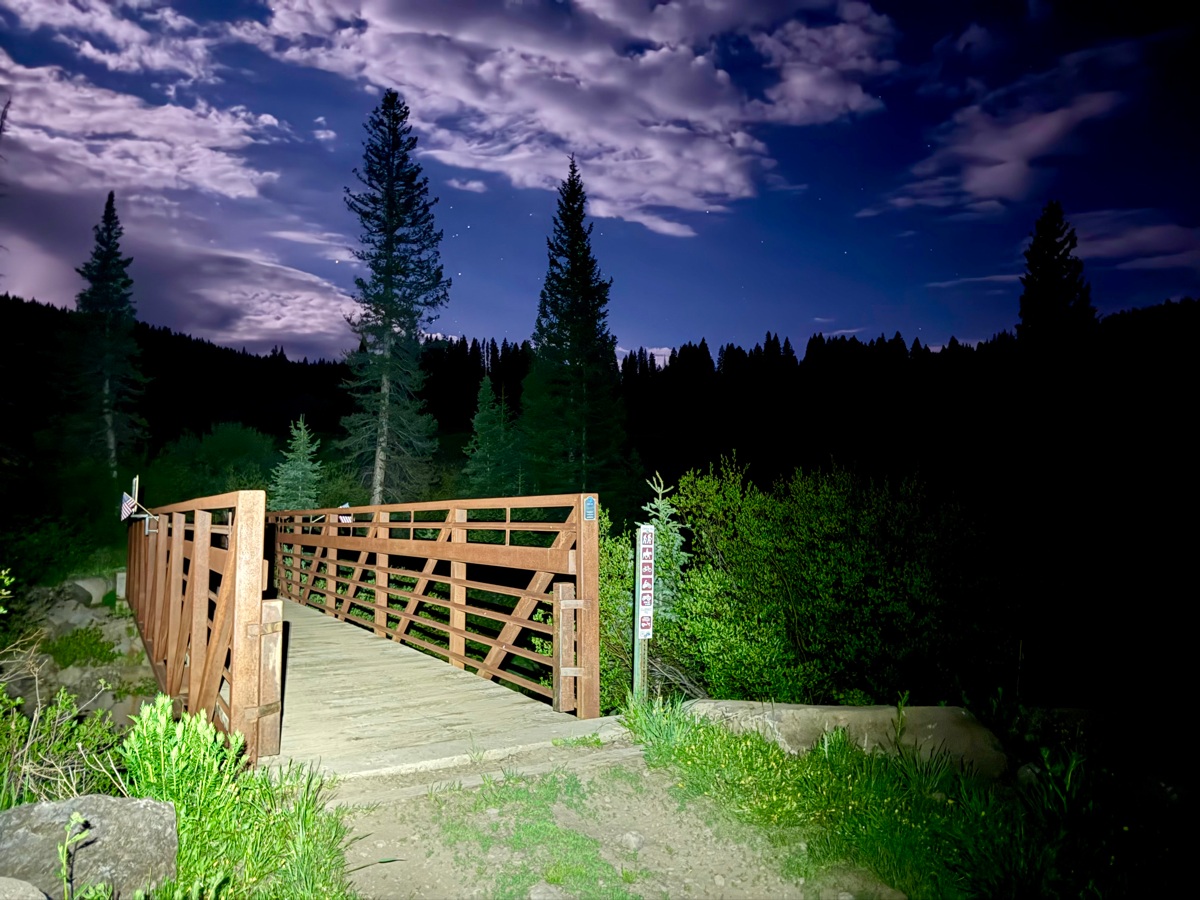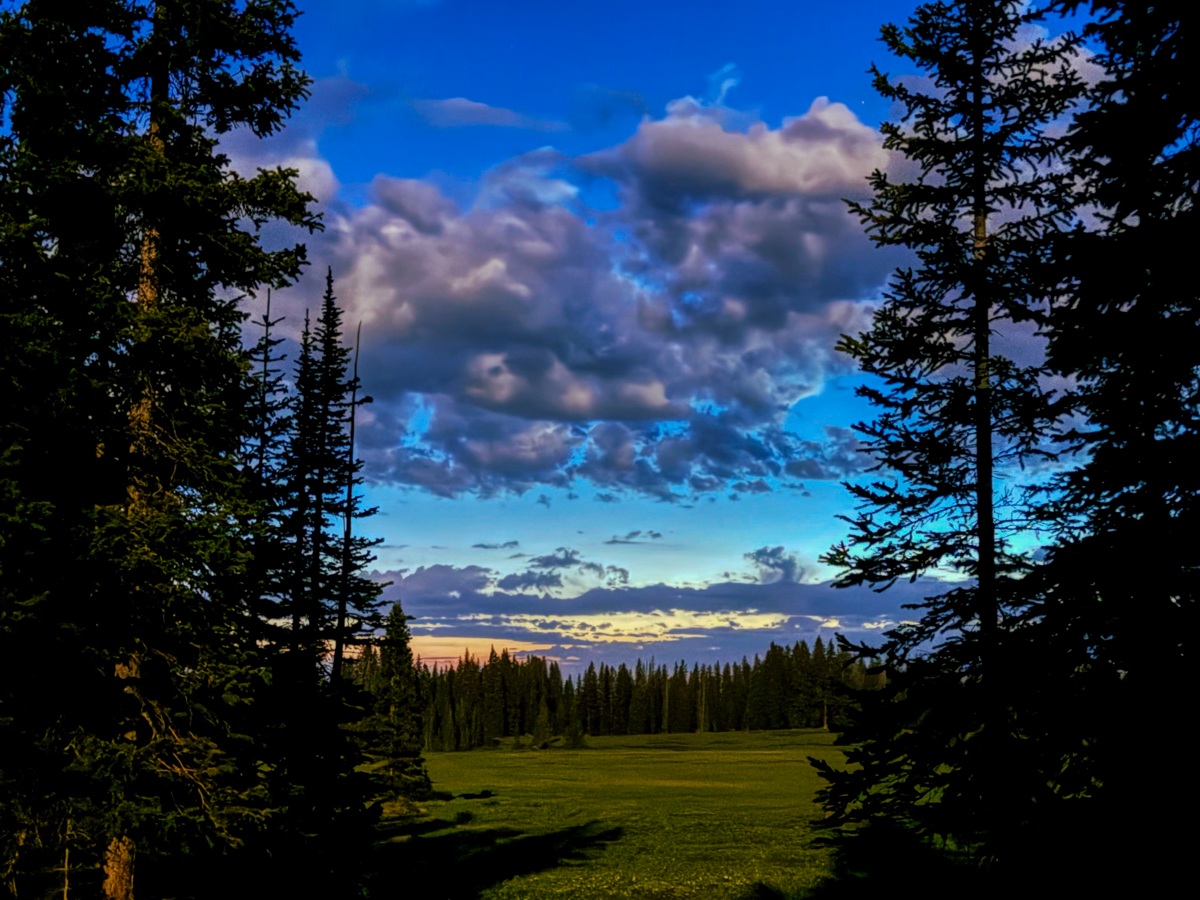Creating and running one’s own ultramarathon is nothing new within the ultrarunning community nor even in my own ultrarunning. Heck, plenty of us may log a handful of ultra-distance training runs in any given year. However, I’m talking about a pinnacle adventure. Not a training outing, but one of the primary foci or even the event of your running year.
After recently running a self-supported 100 miler of my own creation, I’m prompted to share some thoughts from creating that experience and similar outings that preceded it.
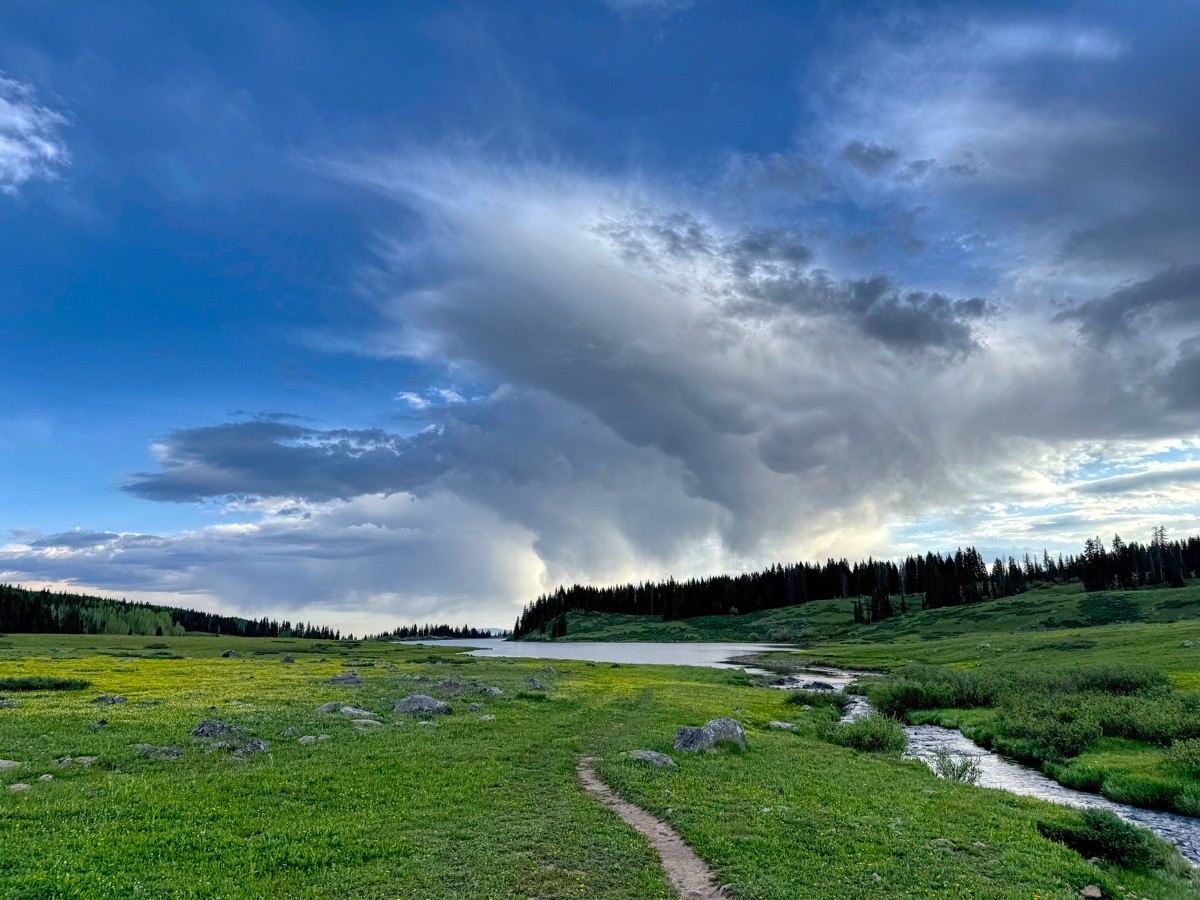
Kicking off my self-supported ultra next to Bonham Reservoir on Grand Mesa. All photos: iRunFar/Bryon Powell
Why Run Your Own Ultra
So, why the heck would you even do this? Here are a few reasons:
- You choose the adventure. You get to essentially be the race director of your own event. Want to race from your hometown to the next town over? Go for it! Always wanted to run your favorite course backward or without that “why we got to run THAT?!” out-and-back or in a different time of year. Always wished your favorite set of trails had an ultra on them? Make it so! Want to link up a couple of your favorite donut shops, breweries, 7-11s, or mountain summits? Have at it!
- Save money. Yeah, you might need to buy a few more supplies than you would for an official ultra, but you won’t have to pay an entry fee that can now easily range into the many hundreds of dollars. Plus, with you controlling the variables, you have a chance to cut down on lodging and transportation costs.
- Not motivated by racing. Perhaps you’ve never enjoyed racing. Maybe you’ve been racing for years or decades, and the race atmosphere might not motivate you anymore. Or even if it does, you might want to try a novel experience.
- Challenge and build your self-reliance. While I’ve considered framing the concept of this article more broadly to include creating one’s own ultra-distance outing with support from friends and family, I’m specifically suggesting running this ultra without planned outside support. Planning for and sticking to a self-supported event requires planning for various scenarios and focusing on self-care during the outing. It can build a confidence in self-reliance for future races and outings. I mean, if you can run 50 kilometers, 50 miles, 100 miles, or however long under your own supervision, think how much easier that’ll be with support during future races.
How to Run Your Own Ultra
- Pick a route that excites you. Seriously, this is hugely important and will separate this sort of run from “just another training run.” Pick an adventure and a route that excites you. That might be a run through your favorite landscape, some creative endeavor, or a route that is otherwise meaningful to you. You’ll want some motivation to help carry you through the journey and to your own finish line. In my recent outing, a dreamed-up run/fish challenge was my primary motivating factor, while 60+ new-to-me miles on and around Grand Mesa, Colorado, were an enticing novelty.
- Pick a route that feels safe to you. What feels safe varies massively from person to person. Whether one feels safe can factor in other people (positive or negative), wildlife, terrain, weather, remoteness, and other considerations. While it may be reasonable to expect a few scary moments along the way, being on edge the whole way isn’t going to be a whole lot of fun.
- Let folks know where you’ll be. If you’ll be running solo, please let someone or a few people know your intended route, as well as when they should contact authorities if they’ve not heard from you. This should be a basic safety step whenever you head out for a big adventure. If you’ll be in mobile service, consider sharing your phone’s location with a trusted contact, or consider a GPS tracker like a Garmin inReach if you’ll be out of mobile service.
- Consider bringing a buddy. I was glad to be solo on my recent big adventure, but having a friend or a few friends join you can increase the fun, safety, and chance of success for the outing. On the other hand, if your plan is to stick together, each person you add means slowing down when anyone needs a break or hits a rough patch. You might also enjoy the solitude, complete control, and enhanced sense of accomplishment in rolling solo.
- Have a plan for more than enough calories. I started my recent big run with three pounds of food, which was more than enough to get me through 100 miles. Although I didn’t depend on them, I stopped at a restaurant, a small grocery, and a pizza place along the way. You, too, could include various establishments along the way to supplement your fueling, just be sure to account for how variations in your progress might correspond to opening and closing times. Also, you can cache food, water, and other supplies in a car, at your house, or at a random location. Please be responsible in caching any food outdoors.
- Have a hydration plan. Convenient water filtration options like the Katadyn BeFree have been a game changer for on-the-go hydration. However, you’ll still want to make sure that you have more than enough water along your route and a plan for any longer sections that might not include frequent water access. Similar to food, keep in mind public water fountains and restrooms, stores and restaurants, and caching as options for additional water sources. Note: If you’ll be primarily using a water filter, have a plan for electrolytes, whether that be an additional flask to which you add drink mix and filtered water, salty foods, or electrolyte supplements.
- Minimize the f*ck up factor. Obviously, no one wants to bonk spectacularly or suffer a severe injury in an actual race, but you’ll want to be even more proactive in avoiding fantastic failure if you’re flying solo.
- Outlast the mistakes. This was one of the last points I added here, but it was crucial to the success of my recent self-supported 100 miler. Fourteen hours and change into my effort, I was lying balled up on the floor of a pizzeria with my abs cramping between dry heaving sessions. The heat and lack of electrolytes in my filtered water had gotten the best of me before I’d taken a bite of pizza. Well, a nice face wash with cold water followed by an hour chilling on the pizza joint’s porch, where I ate a couple of slices along with downing a Pepsi, a Mountain Dew, and a Coors, had me feeling well enough to safely continue. It was a good reminder that “it never always gets worse.” I had a couple similar moments earlier in the outing where either addressing a worsening issue or staying calm but focused on a solution made finishing the run possible.
- Have an extraction plan. If you’ll be running in a very populated area, maybe a taxi or Uber ride home is a feasible option to have in mind if things go wrong. Having a trusted friend or family member on call is another option. Finally, some of us might be comfortable with hitchhiking if it all goes to hell.
Call for Comments
- Have you run your own self-supported ultra(s)? If so, what was your favorite?
- Have any tips for others looking to run their own self-supported ultra?
